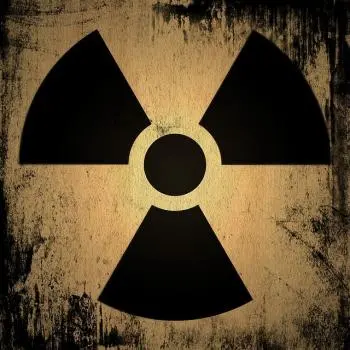
Nuclear power plants are a crucial source of energy in many parts of the world, providing a large amount of electricity in an efficient and low-carbon manner.
However, safety at these facilities is of the utmost importance due to the risks inherent in nuclear power.
In this article, we will explore in detail the key safety systems at a nuclear power plant and how they work to ensure the safety of the plant and the surrounding community.
1. Reactivity system
The reactivity system is essential to control the rate of the nuclear reaction in the reactor. This system is designed to prevent the nuclear fission chain reaction from accelerating beyond safe limits.
The most important elements of this system include:
-
Control Rods: These rods, made of neutron-absorbing materials such as boron or cadmium, can be hydraulically inserted into the reactor core to reduce reactivity.
-
Automatic Control Systems: These systems automatically adjust the position of the control rods in response to changes in reactivity, ensuring safe operation.
2. Cooling system
Cooling is essential to keep the reactor temperature under control and prevent core meltdown. The cooling system is typically based on the use of water as a coolant.
Here are some crucial parts of this system:
-
Primary and secondary cooling circuits: The primary coolant circulates through the reactor core, while the secondary coolant is used to generate steam that drives the turbines to produce electricity.
-
Circulation Pumps: These pumps maintain the flow of coolant and ensure that the reactor does not overheat.
-
Backup system: Redundant backup systems and, in some cases, passive systems that do not require external power to function are included, to guarantee cooling even in emergency situations.
3. Containment system
Containment is a crucial barrier in protecting against the release of radioactive materials into the environment. The containment system is a high resistance structure that surrounds the reactor.
Its key components are:
-
Double containment: Many modern nuclear power plants incorporate a double containment design, with an internal and an external structure to provide additional protection.
-
Filtered Vent Systems: In the event that it is necessary to release pressure from the containment, filtered vent systems ensure that any radioactive material is retained before being released into the environment.
4. Alarm and detection system
Alarm and detection systems are designed to constantly monitor plant conditions and alert on any anomalies. These detection and alarm systems include:
-
Radiation and temperature sensors: These devices monitor radiation levels and temperature at all times.
-
Centralized control systems: Nuclear power plant operators have access to a centralized control system that displays real-time information on the status of the plant and provides visual and audible alarms in case of problems.
5. Accident control system
In the event of a serious incident, it is essential to have accident control systems that mitigate adverse effects. These systems may include:
-
Emergency water injection: To cool the reactor in critical situations.
-
Gas recirculation and ventilation systems: To control the concentration of radioactive gases in the plant.
-
Pressure control systems: To avoid overpressure in the containment.
6. Personnel and training
The personnel who operate and maintain a nuclear power plant are a fundamental part of safety. Thorough and regular training is required to ensure they are prepared to respond appropriately in emergency situations.
In addition, accident drills are carried out regularly to improve staff training.
7. Regulation and evaluation
Nuclear plants are subject to strict regulation by government control agencies. This includes regular inspections, stress tests and safety reviews to ensure that nuclear power plants meet the highest safety standards.
